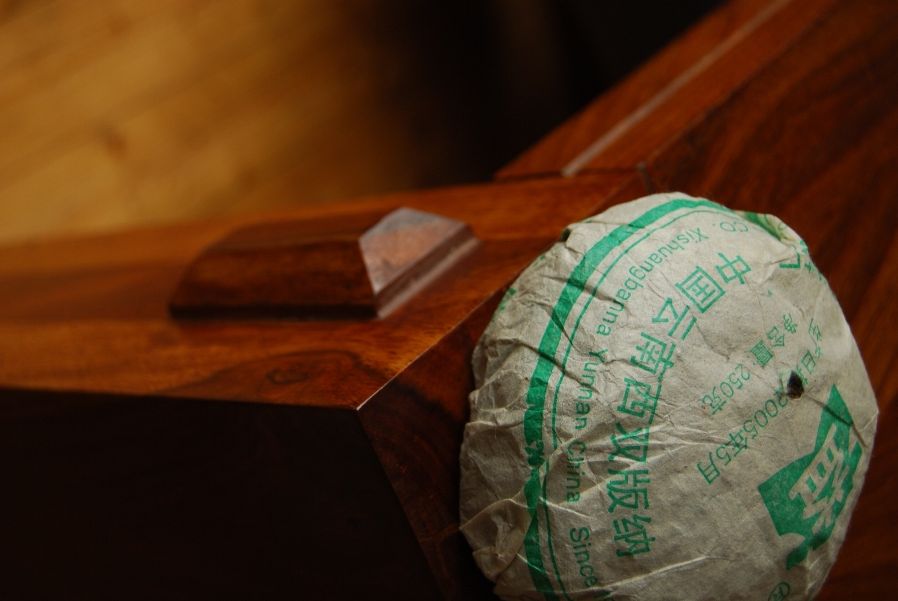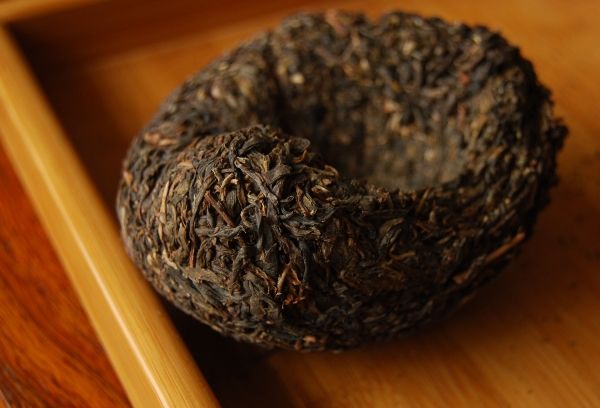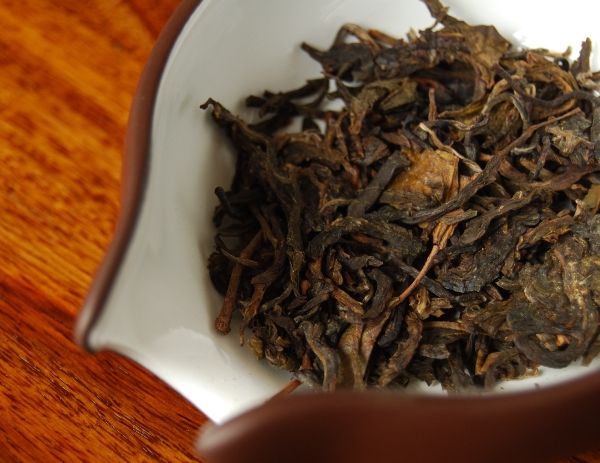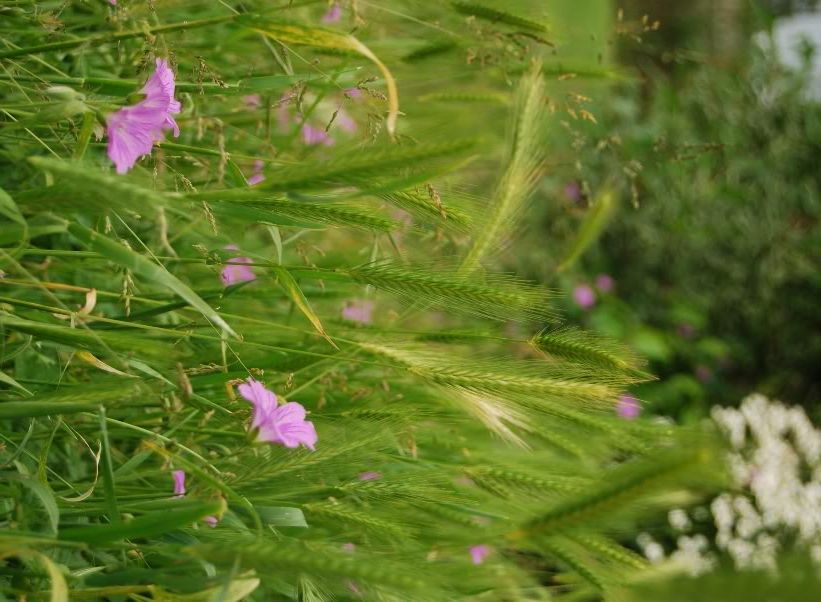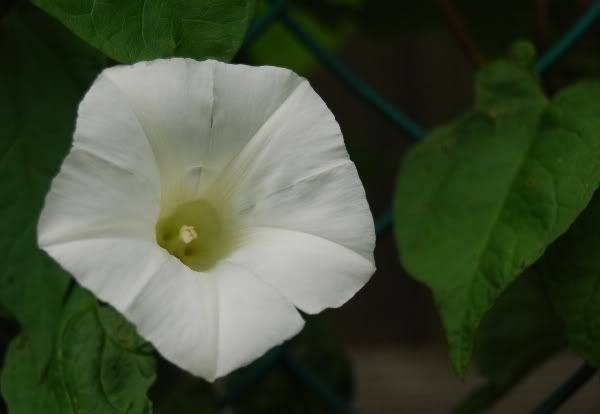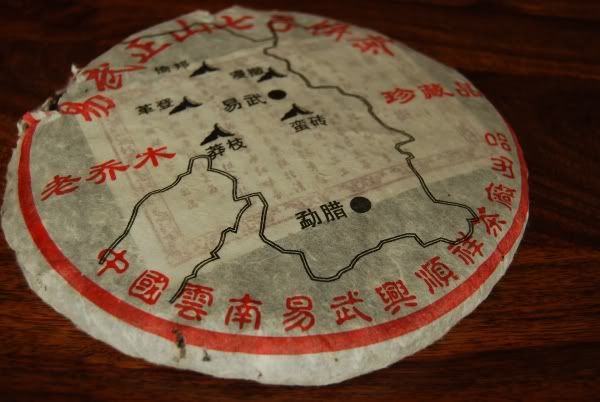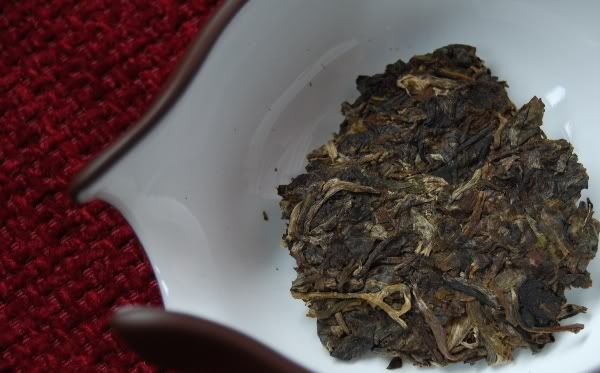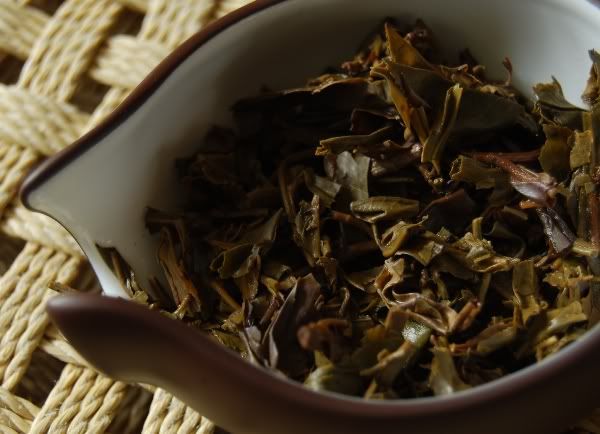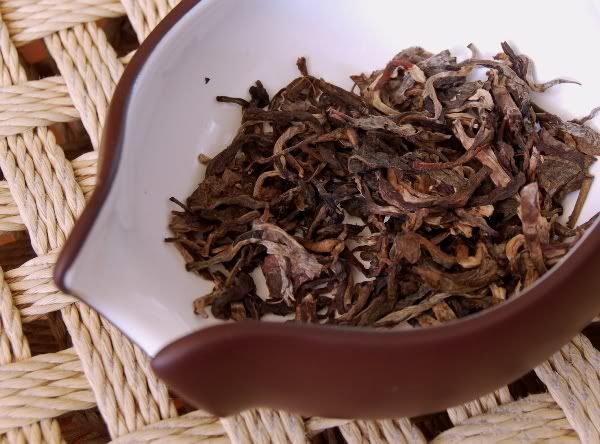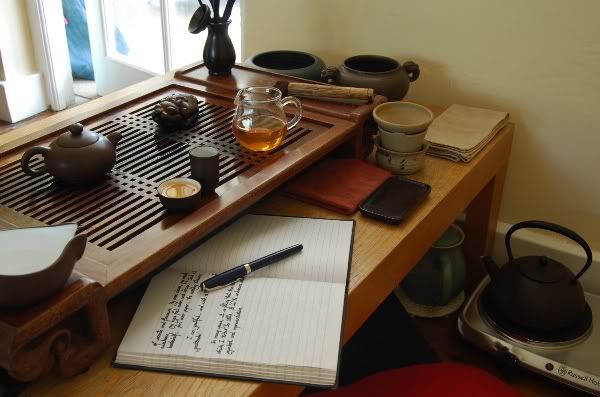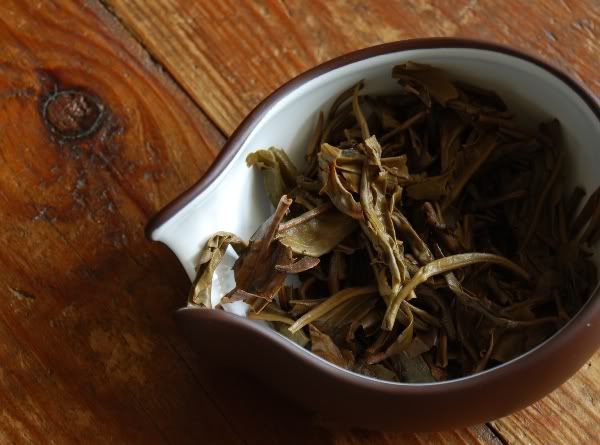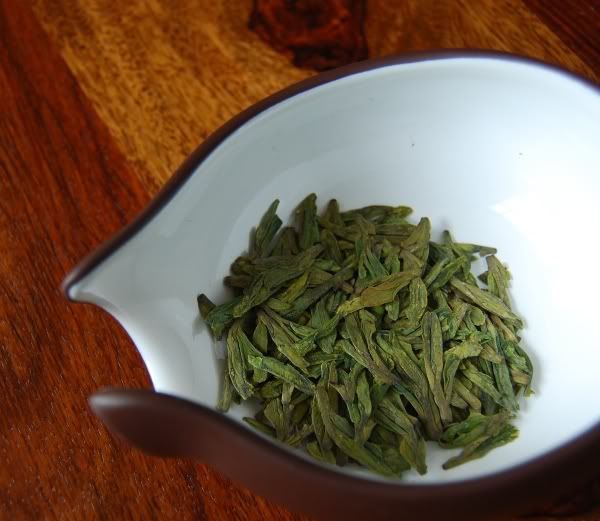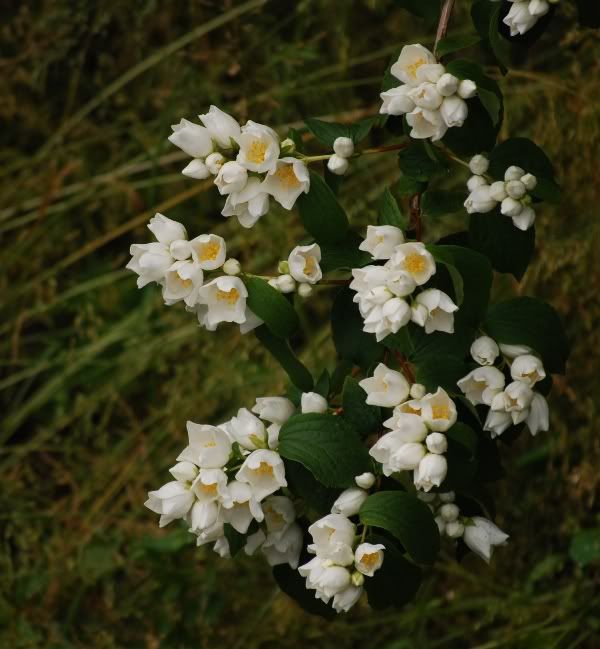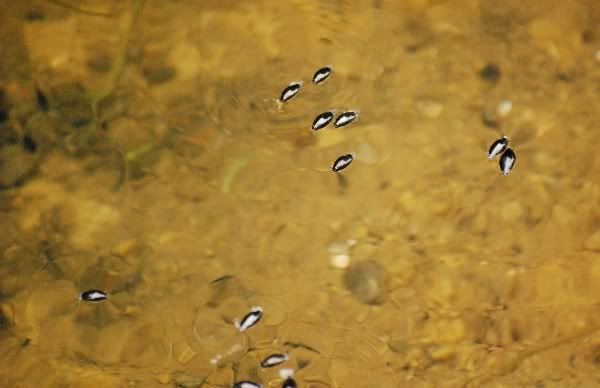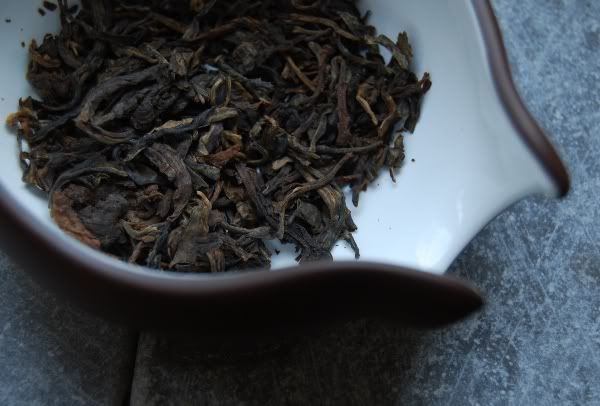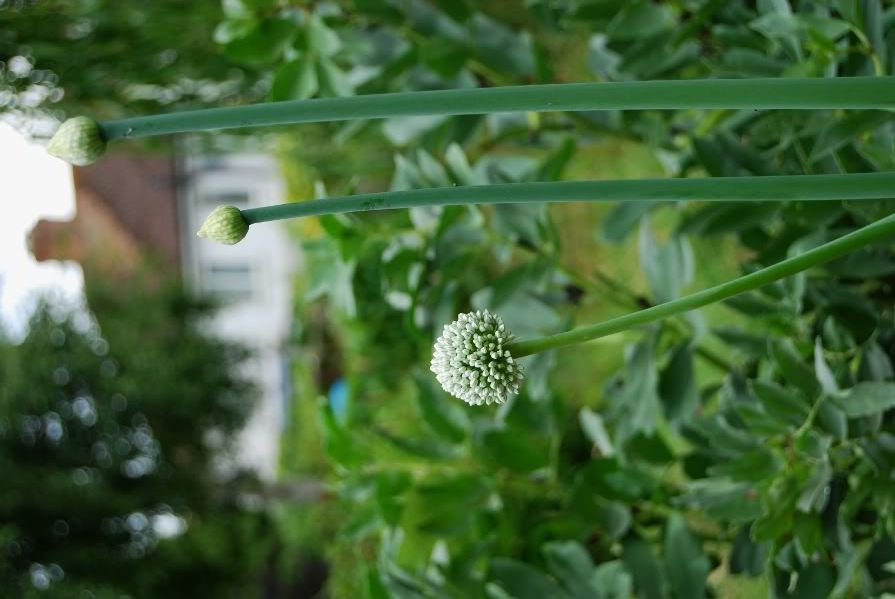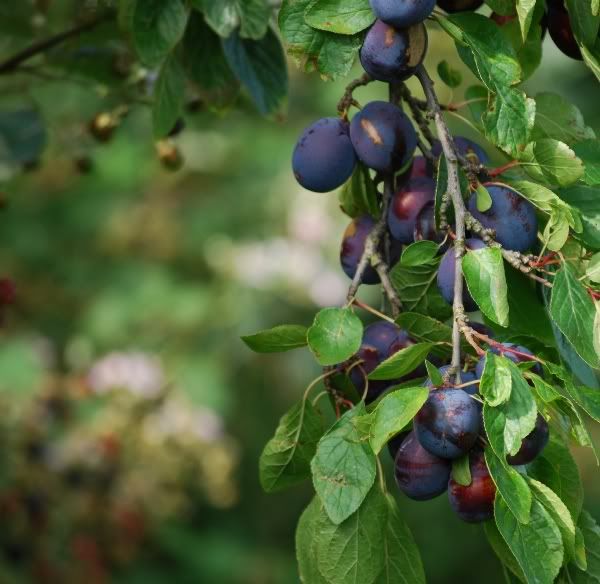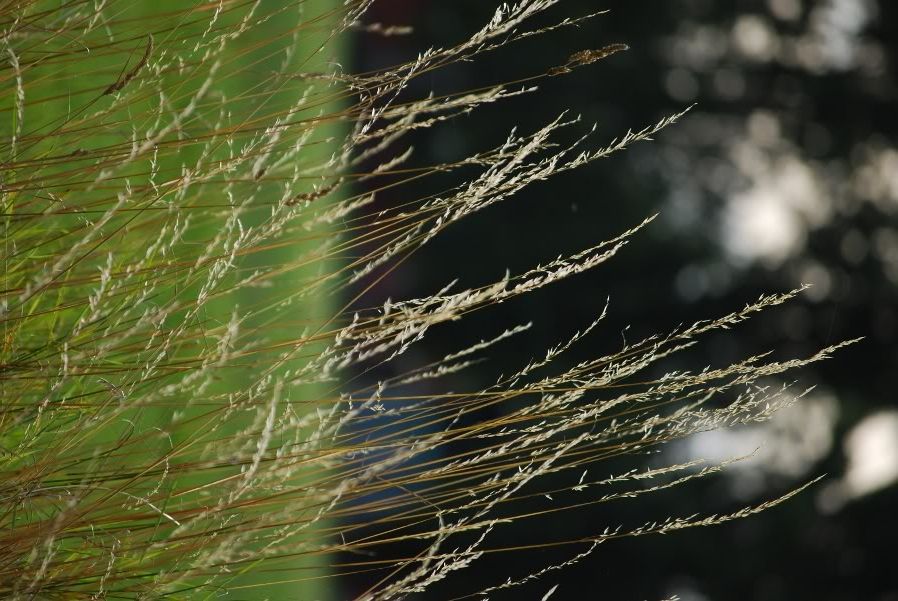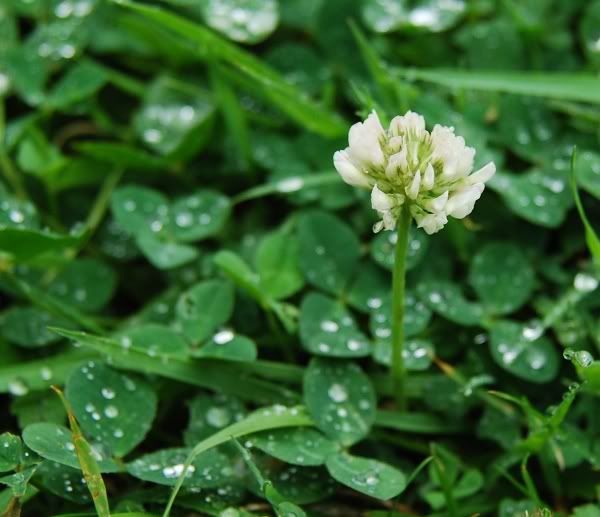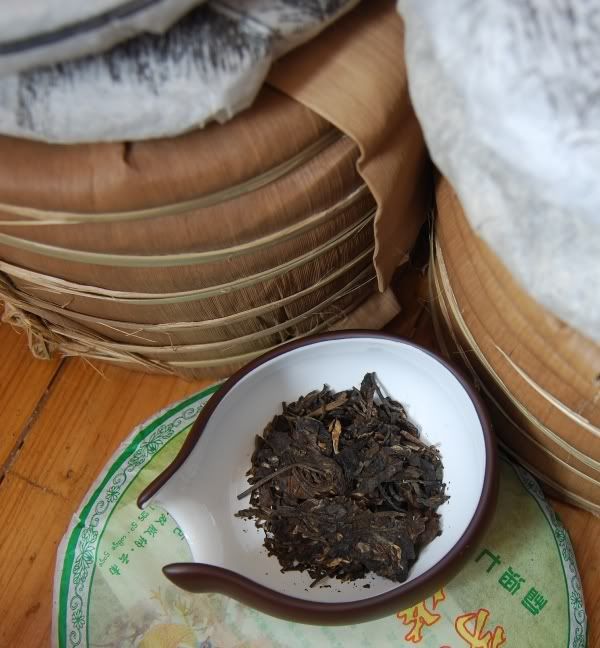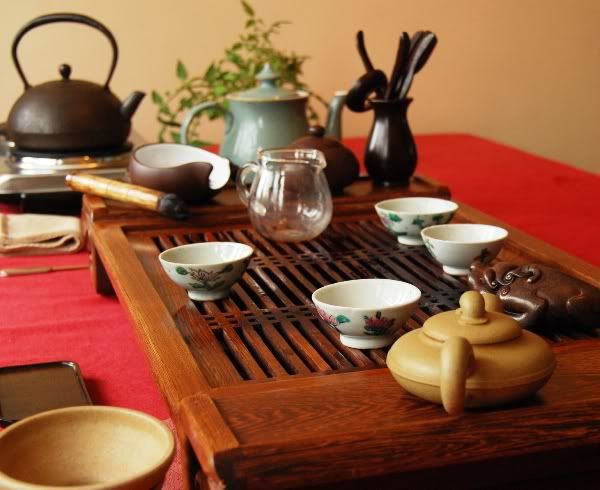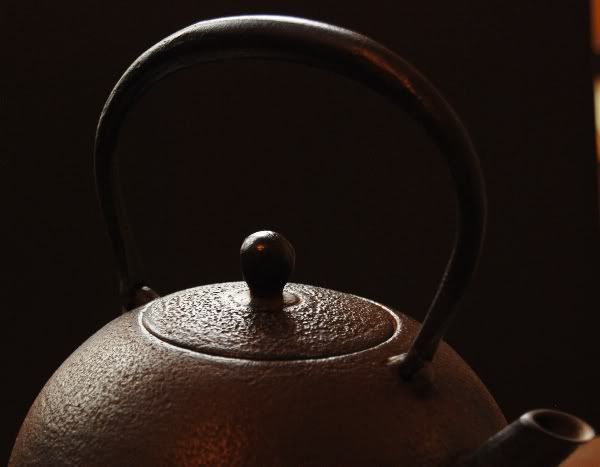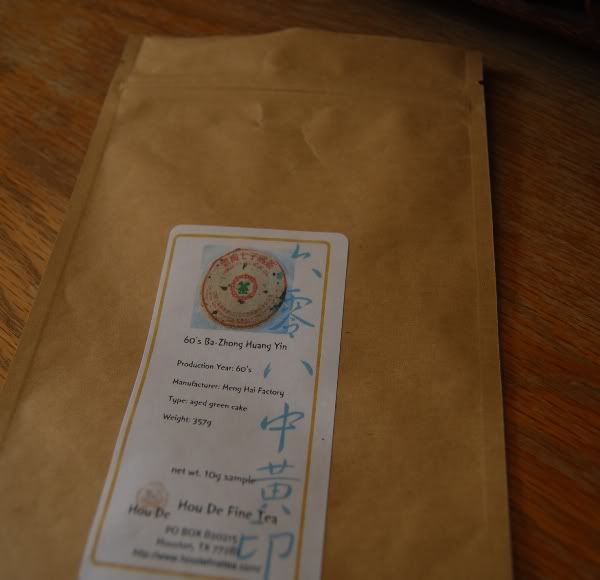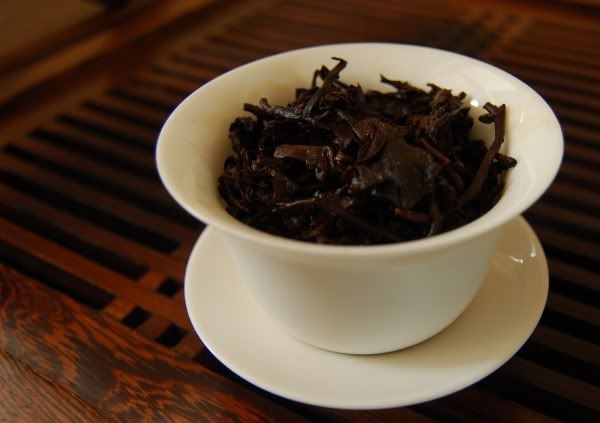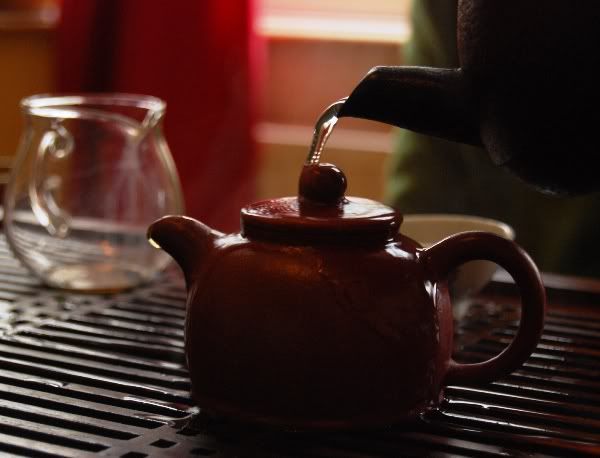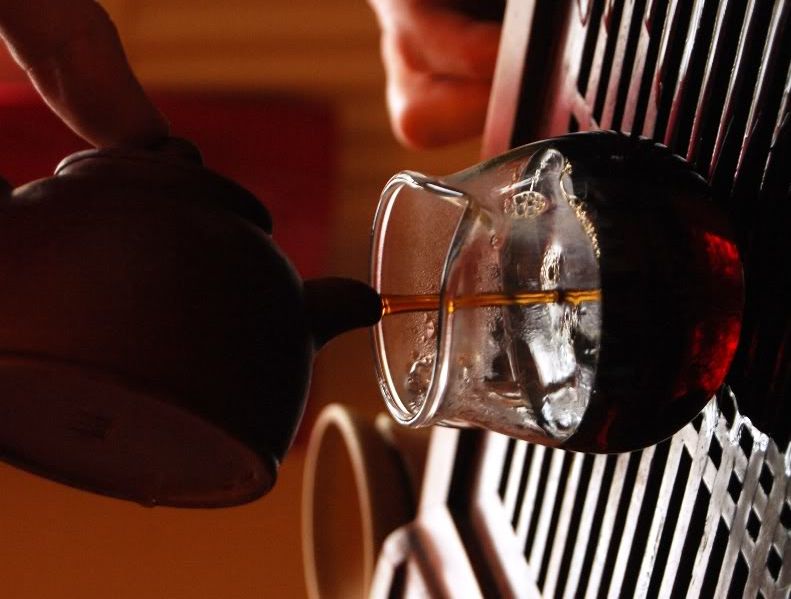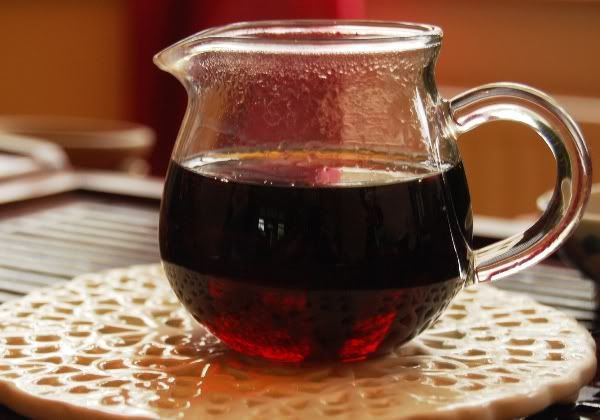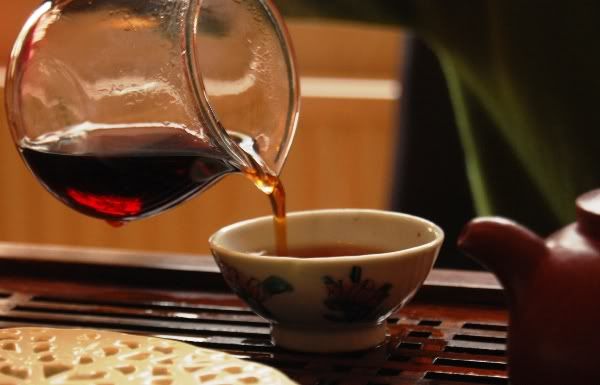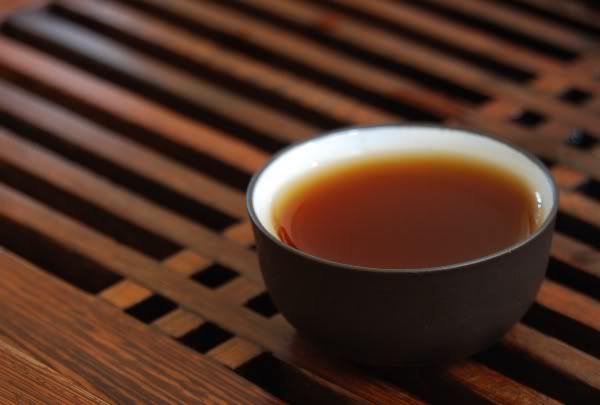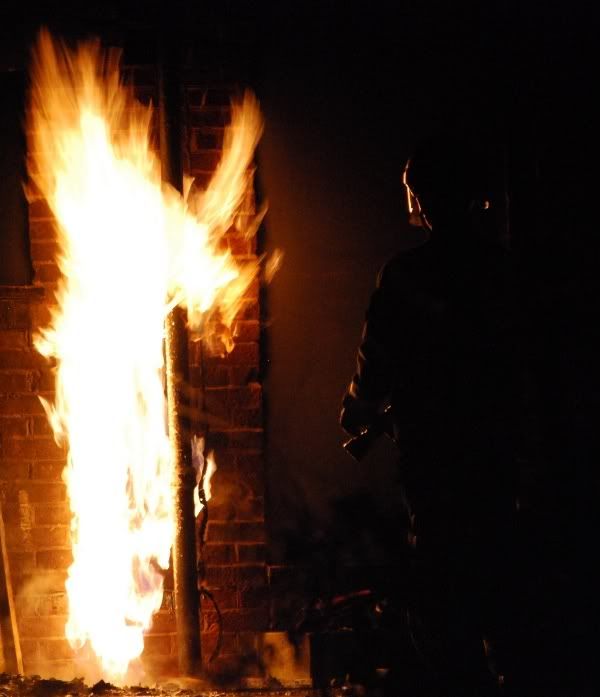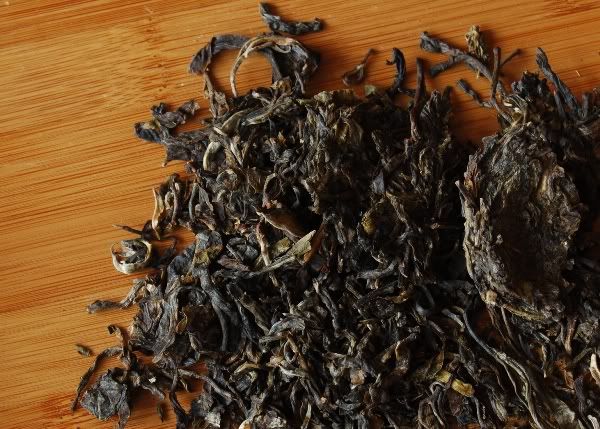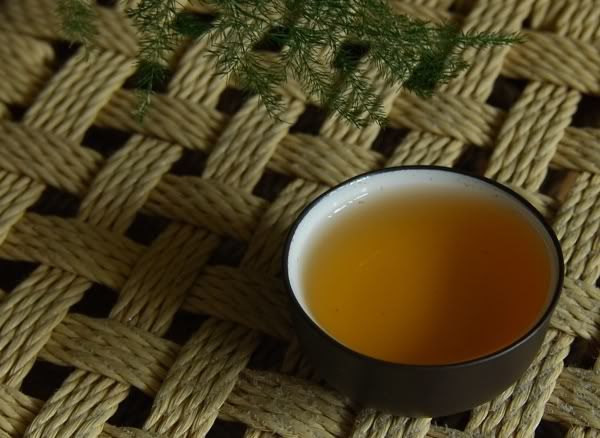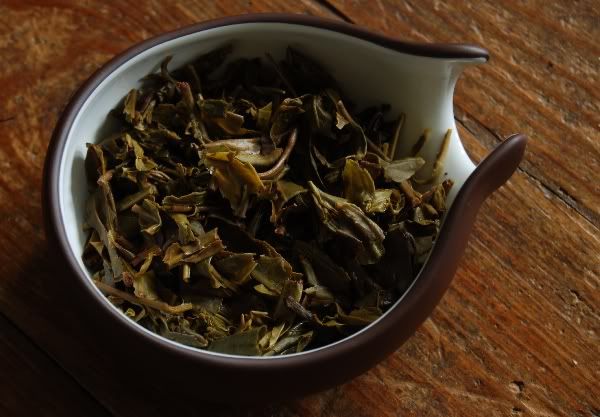I bought this tea during the first year of my doctoral degree, and during the second year of Lei's. It has travelled with us, through our various houses, changing locations each year, before finally settling in our eventual home. Like the couple with whom it travelled, this tea has come a long way, and is a "work in progress".
I checked the Half-Dipper to find my previous notes on this tea, but was amused to find that there were none. So, I have the opportunity to add my list of notes with a tea that I remember loving very much, and which I haven't touched in over three years.
I bought this tea from Yunnan Sourcing on release, and have been searching high and low for further examples. Happily, it is quite common on Taobao, where it sells today for less than I bought it originally.
It is a big, beefy tuocha, weighing in at a decidedly hefty 250g. "Zaochun" means "early spring", and I believe that 2005 was the last time that this was made. Since then, we have others to replace it, such as the delicious "08 Tuocha".
The compression is very sociable: it is tight enough to age nicely, but loose enough that leaves can be separated without breaking them. As you can see, they are medium-sized leaves. Almost no tips exist in the blend, but there are plenty of stems and huangpian [yellow flakes].
I remember this tea being super-green, and spicy. In the three years since we've sat down together, this tea has changed greatly. It is fascinating to be able to observe these changes first-hand, with knowledge of how the tea tasted originally.
It remains an honest, untainted yellow, which I find very encouraging. As before, it has tons of kuwei [pleasant bitter taste] - it's a real eye-opener. Unlike before, the main body of the flavour has changed from fresh green Menghai straw to a pine-like sweetness.
This tea has been caught right in the midst of the changes of its adolescence. It has the potent kuwei of youth, and some hints of the woody territory into which it will age. At the moment, it's not a very enjoyable drink. That pine-like woodiness is not yet developed, and the kuwei has not yet changed. It's simply too aggressive, but without the fresh Menghai flavour of green tea, after its four years.
It remains an honest, untainted yellow, which I find very encouraging. As before, it has tons of kuwei [pleasant bitter taste] - it's a real eye-opener. Unlike before, the main body of the flavour has changed from fresh green Menghai straw to a pine-like sweetness.
This tea has been caught right in the midst of the changes of its adolescence. It has the potent kuwei of youth, and some hints of the woody territory into which it will age. At the moment, it's not a very enjoyable drink. That pine-like woodiness is not yet developed, and the kuwei has not yet changed. It's simply too aggressive, but without the fresh Menghai flavour of green tea, after its four years.
This is an honest, powerful tea, and I'm definitely going to be buying several more tubes. My strategy with teas at the moment is to buy one or two pieces to test, via costly international postage, then, if those test purchases turn out to be decent, buy in quantity and ship it via internal mainland post to Lei's family home, where we will collect it on our next visit.
P.s. I'm off to the south of France (Grenoble). If you're going to "IEEE Machine Learning for Signal Processing 2009" then look me up. I'm bringing tea!

